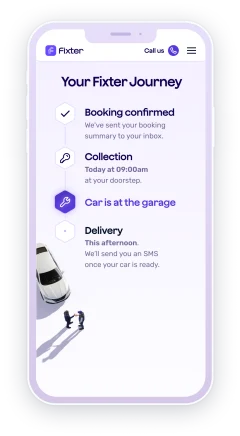Common problems with Jaguar I-Pace
The Jaguar I-PACE has made waves as a stylish electric vehicle, yet, like any car, it has its share of quirks and issues. As more drivers embrace electric vehicles, understanding the common problems faced by I-PACE owners becomes crucial. This guide aims to offer a clear and practical insight into the potential challenges you might encounter. From battery concerns to software glitches, we will cover some of the typical issues you may need to address. Whether you are a current owner or considering purchasing an I-PACE, this guide is designed to keep you informed and prepared.

Battery and Charging Concerns
Electric vehicle owners often face concerns related to battery performance and charging. The Jaguar I-PACE is no exception, with several potential issues that could affect the overall driving experience. This section will explore common worries such as range anxiety, infrastructure challenges, and battery degradation.
Range Anxiety
Range anxiety refers to the fear that an electric vehicle will run out of power before reaching its destination. For Jaguar I-PACE owners, this can be a notable concern, especially on long journeys or in areas with limited charging facilities.
Most I-PACE models offer a range of around 292 miles on a full charge. However, factors such as driving style, weather conditions, and additional load can significantly reduce this figure. Therefore, drivers often need to plan their routes carefully and be mindful of their vehicle’s real-world range.
To manage range anxiety, it helps to familiarise oneself with local charging points and consider investing in a home charging station. Planning ahead and monitoring the vehicle’s range can provide peace of mind and ensure a smoother driving experience.
Charging Infrastructure Challenges
While the number of charging stations is increasing, the availability and reliability of these facilities can vary significantly. For Jaguar I-PACE drivers, access to a robust charging network is crucial for stress-free travel.
Charging infrastructure is not uniform across the UK, with urban areas typically offering more options than rural locations. This disparity can lead to difficulties, particularly on longer road trips. Additionally, not all charging stations offer the fast charging capabilities that an I-PACE might need for rapid refuelling.
A practical approach involves using apps to locate charging points and checking station availability before setting out. Staying informed about charging options can minimise frustration and ensure continuous travel without undue delays.
Battery Degradation Signs
Battery degradation is a natural process that occurs over time, impacting the capacity and efficiency of electric vehicle batteries. For Jaguar I-PACE owners, recognising the signs of degradation can help maintain optimal vehicle performance.
Signs of battery degradation may include a noticeable reduction in range or longer charging times. While most degradation is gradual, significant drops in performance might require professional evaluation. Regular maintenance and proper charging habits can slow down this process.
Owners can mitigate battery wear by avoiding extreme temperatures, keeping charge levels moderate, and using fast chargers sparingly. These practices can help prolong battery life and ensure the I-PACE remains a reliable vehicle for years to come.
Software and Connectivity Issues
Software is crucial for any modern vehicle, and the Jaguar I-PACE is no exception. While the car boasts advanced features, owners might encounter issues with infotainment systems, mobile app connectivity, and software updates. This section will delve into these common software-related challenges.
Infotainment System Glitches
The infotainment system in the Jaguar I-PACE provides entertainment, navigation, and vehicle information. However, users may experience glitches that impact usability.
Common issues include slow response times, unresponsive touchscreens, and occasional system crashes. These problems can stem from software bugs or hardware malfunctions, affecting driver satisfaction and convenience during journeys.
To address these glitches, regularly updating the system software is essential. It's also advisable to perform a system reset if issues persist. Consulting a dealer for professional assistance can provide further troubleshooting and solutions to enhance the infotainment experience.
Mobile App Connectivity Problems
The Jaguar I-PACE mobile app offers remote access to vehicle functions, including climate control and charging status. However, connectivity issues can limit the app's effectiveness and frustrate users.
Problems often arise from network connectivity or software compatibility. Users might experience difficulty establishing a connection or find features occasionally unresponsive. Regular app updates and ensuring a stable internet connection can mitigate these issues.
For optimal use, keeping the mobile app updated and ensuring proper device pairing can enhance functionality. If problems persist, reaching out to Jaguar support might provide additional guidance and troubleshooting options.
Software Update Difficulties
Regular software updates are vital for maintaining vehicle performance and fixing known issues. However, I-PACE owners may encounter challenges during update processes.
Difficulties can include failed installations, prolonged download times, or incomplete updates. These problems can result from unstable network connections or insufficient system storage.
To address update difficulties, ensuring a stable internet connection and adequate system space is crucial. If issues persist, consulting a Jaguar dealership for assistance can provide solutions and ensure the vehicle remains up-to-date with the latest software enhancements.
Performance and Driving Dynamics
The Jaguar I-PACE is known for its performance and driving dynamics, but drivers may face challenges related to acceleration, handling, regenerative braking, and noise levels. This section provides insights into these aspects.
Acceleration and Handling
Acceleration and handling are key features of the Jaguar I-PACE, known for its quick response and agility. However, some drivers may experience inconsistencies in performance.
In certain conditions, the vehicle may not accelerate as smoothly as expected. This can be due to software settings or road conditions impacting the vehicle's dynamics. Additionally, handling in tight corners or at high speeds may vary, affecting driver confidence.
Ensuring proper tyre maintenance and alignment can improve handling. Understanding the vehicle’s performance settings and adjusting driving style can also enhance the overall driving experience.
Regenerative Braking Quirks
Regenerative braking is a feature that helps recharge the battery by converting kinetic energy during braking into electrical energy. However, it can exhibit quirks that drivers should be aware of.
Some I-PACE owners report inconsistent braking feel or performance. These variations can be attributed to different driving conditions or system settings, which may take time for drivers to get accustomed to.
To optimise regenerative braking, experimenting with different settings and gradually adapting to the system can help. If braking performance remains irregular, consulting a professional may provide additional insights and adjustments.
Noise and Vibration Levels
Electric vehicles are typically quieter than traditional cars, but the Jaguar I-PACE may still present issues with noise and vibration. Understanding these factors can enhance comfort and satisfaction.
Some sources of noise include tyre noise, wind resistance, and mechanical sounds during acceleration. Vibration levelsmight vary, influenced by road conditions or vehicle speed, potentially affecting ride comfort.
Regular maintenance, such as tyre alignment and suspension checks, can reduce noise and vibration. Ensuring proper insulation and addressing any mechanical issues promptly will contribute to a quieter and smoother driving experience.
Mechanical and Electrical Troubles
Mechanical and electrical systems are essential for the smooth operation of any vehicle, and the Jaguar I-PACE is no different. This section explores common issues related to suspension, electrical failures, and warning lights.
Suspension and Ride Quality
The suspension system is crucial for ride quality, absorbing shocks and ensuring stability. Jaguar I-PACE drivers might encounter issues affecting comfort and handling.
Common suspension troubles include excessive bouncing, uneven tyre wear, or noticeable dips during acceleration and braking. These can result from worn-out components or improper alignment, impacting the overall driving experience.
Regular suspension checks and maintenance can prevent these issues. If ride quality diminishes, consulting a technician to inspect and replace worn parts can restore the vehicle’s comfort and handling.
Electrical System Failures
Electrical system failures can disrupt vehicle operations, from starting the car to powering essential functions. For Jaguar I-PACE owners, these issues may arise due to various factors.
Symptoms of electrical failures include flickering lights, unresponsive controls, or difficulties starting the vehicle. Faulty wiring, blown fuses, or battery issues are common culprits, affecting vehicle reliability.
To address electrical failures, regular inspections and timely replacements of faulty components are vital. Seeking professional assistance for persistent issues ensures that the electrical system remains functional and dependable.
Common Warning Lights
Dashboard warning lights are crucial indicators of potential issues in the Jaguar I-PACE. Understanding these signals can help prevent more serious problems.
Common warning lights include those for the battery, brakes, or tyre pressure. Ignoring these warnings can lead to larger issues, impacting safety and performance. Recognising and addressing these lights promptly is essential.
For accurate diagnosis, consulting the vehicle manual or a professional mechanic can provide guidance. Regular monitoring and maintenance ensure the vehicle remains in optimal condition and reduces the risk of unexpected breakdowns.
Maintenance and Repair Considerations
Maintenance is an inherent part of vehicle ownership, and the Jaguar I-PACE requires specific considerations. This section covers service costs, technician availability, and warranty limitations.
Service Costs and Intervals
Regular servicing ensures the Jaguar I-PACE remains in top condition, but understanding these costs and intervals is important for budgeting and planning.
Service intervals for the I-PACE are typically every 21,000 miles or two years, whichever comes first. These intervals can vary based on driving conditions and usage, impacting the overall maintenance costs.
Owners should plan for routine service expenses, which can include inspections, fluid changes, and part replacements. Comparing service packages and choosing reputable service centres can ensure quality maintenance at a reasonable cost.
Finding Qualified Technicians
Finding qualified technicians familiar with Jaguar I-PACE vehicles is crucial for effective maintenance and repairs. However, not all mechanics may have the necessary knowledge or equipment.
Owners should seek authorised Jaguar service centres or technicians with experience in electric vehicles. This ensures that repairs and maintenance are performed accurately and efficiently, preserving vehicle performance.
Researching service centre reviews and verifying technician credentials can help locate reliable professionals. This approach ensures peace of mind and long-term satisfaction with vehicle upkeep.
Warranty and Coverage Limitations
Understanding the warranty and coverage limitations of the Jaguar I-PACE is essential for informed ownership. These protections can vary, influencing repair costs and peace of mind.
The I-PACE typically comes with a warranty covering specific components and repairs. However, certain exclusions and limitations may apply, affecting coverage for particular issues.
To maximise warranty benefits, owners should familiarise themselves with coverage details and adhere to recommended maintenance schedules. This ensures compliance with warranty terms and can reduce out-of-pocket expenses for covered repairs.








